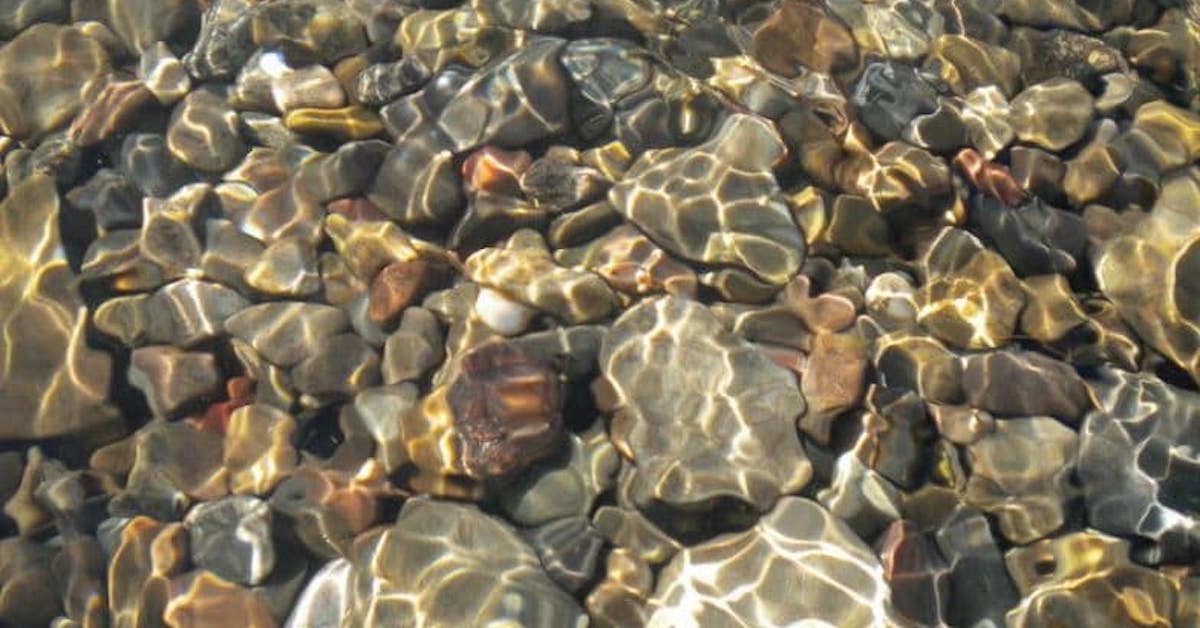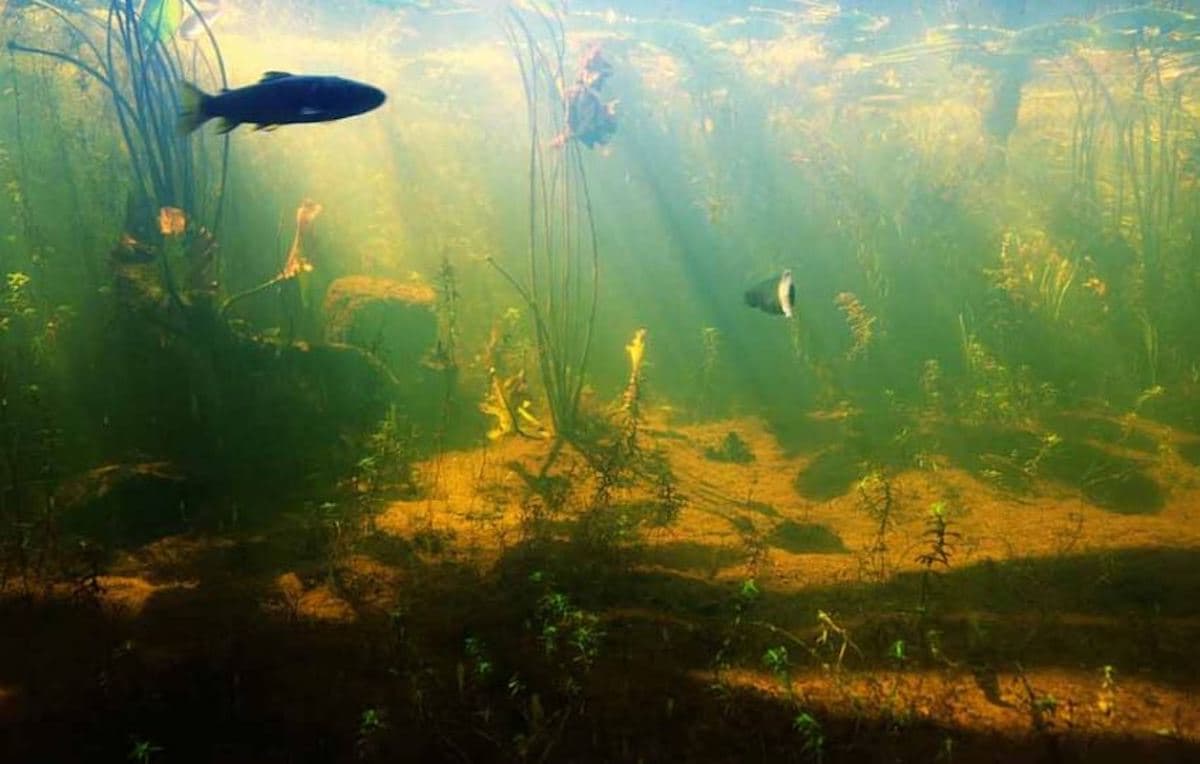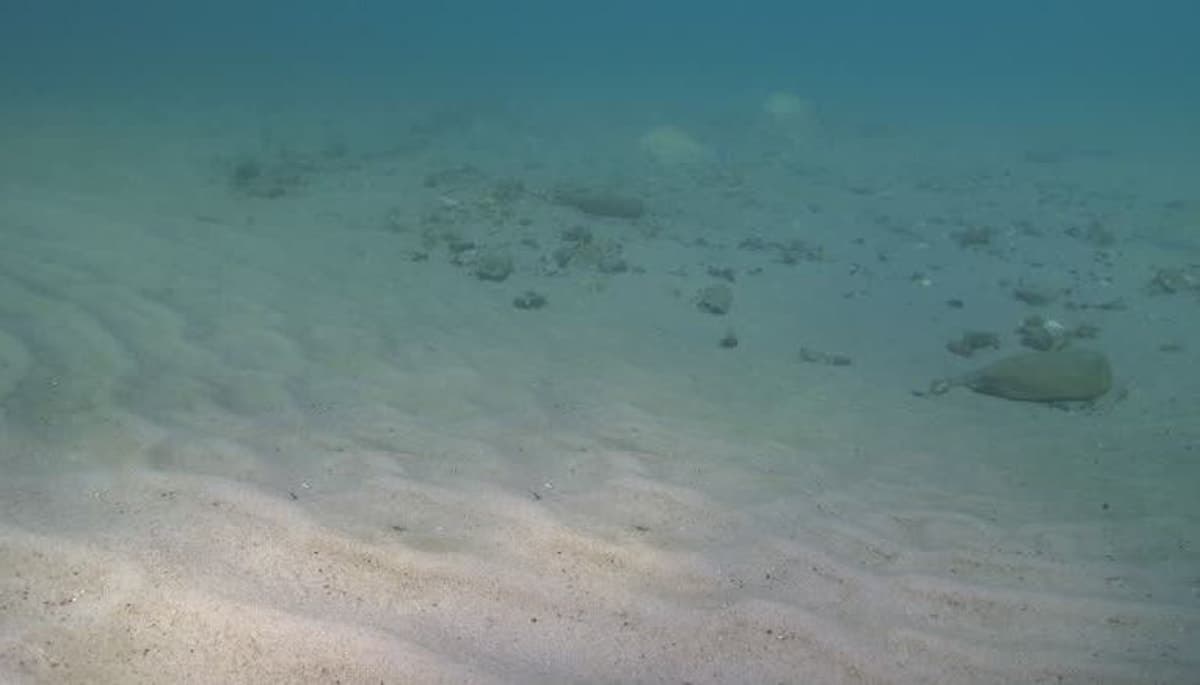The material on your pond bottom is often overlooked, but can play a key role for your fish, depending on the species. Incorporating areas of varying bottom substrate provides fish with more areas and options for feeding, rest, and reproduction.

Rocky Pond Bottom
Providing varying bottom substrate can allow for more production of forage for your fish. Rocky pond bottom areas are great for crayfish, hellgrammites, and other insect larvae. These are all prime food sources for many fish species, especially Smallmouth Bass. Rocky areas near muddy areas are also great transitional zones. Muddy areas typically have high plant growth which is good for hiding areas and setting up ambush points for the predator fish. Rocky areas typically have few weeds so you can naturally set up a distinct weed edge using rocks.
Some species, such as walleye, need a rockier substrate for laying eggs. This area also needs to be in fairly shallow water, so having the proper substrate at the proper depth is crucial.

Muddy Pond Bottom
Muddy pond bottom areas tend to produce more leeches which many fish, including Bass and Perch, feed on quite regularly. Muddy bottoms also produce high plant growth. Having areas of dense vegetation is good for your bait fish to have an area of safe haven. Don’t allow for too many weeds though, as it makes it more difficult for your predator fish to feed and can also become an eyesore, not to mention a pain when fishing.
Creating and maintaining areas of distinct weed lines that separate dense vegetation from sparse or no vegetation areas will provide excellent habitat for many fish species as well as ample fishing opportunities for you. Pike, for example, love to use weed lines for feeding, both in summer and winter. Set up along these lines and you will have a great chance for some action. Musky, on the other hand, like to use more sparse or intermittent vegetation areas that border deeper areas or more densely vegetated areas.

Sandy Pond Bottom
Sand pond bottoms also provide a transition zone from a muddier bottom. You will typically have sparse weed growth in the sandy area. Early in the season, these areas tend to warm up faster as the sunlight can penetrate to the bottom quicker. This will draw in bait fish and then your predator fish. Many nighttime feeders, such as Walleye, like to use shallow sand flats to feed at dusk.
Bass and panfish will also use shallow, sandy areas for making their nests and laying eggs. These are very visible in spring and often are a great place to see good size fish guarding their territory and eggs.
Sand flats also provide for good visibility for predator fish and can be good areas to target larger fish, when positioned near drop offs and/or structure.
No matter the material of your pond bottom, it’s always a good idea to incorporate different types to encourage healthy fish feeding, sleeping and reproductive habbits. For more information, call our tech experts at 715-262-4488 or email us at support@kascomarine.com.